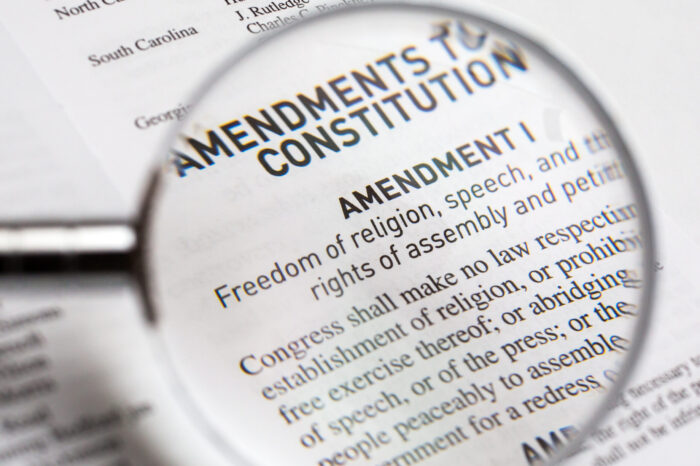
Freedom of Speech and the First Amendment

We hear words and phrases such as “freedom of speech”, “my right to assemble”, “my religious rights” uttered every day. But where do those rights come from, and to whom do they apply?
The first ten (10) amendments to the United States Constitution are known as the Bill of Rights, and were ratified by the states in 1791, only three years after the Constitution itself was ratified. In drafting the Bill of Rights, the founding fathers sought to balance the rights and responsibilities delegated to the Government, by the creation of the Executive, Legislative, and Judicial Branches, with the rights of the individual citizen. The language of the Bill of Rights sets forth what government, both state and federal, cannot do. For example, the First Amendment to the United States Constitution, which was ratified in 1791, states as follows:
Congress shall make no law respecting an establishment of religion, or prohibiting the free exercise thereof; or abridging the freedom of speech, or of the press, or of the right of the people peaceably to assemble, and to petition the Government for a redress of grievances.
Note that the language here is prohibitory. “Congress shall make no law…” as opposed to the language in the Constitution, which affirmatively creates the three branches of government and establishes their rights and responsibilities. Addressing all of the rights set forth in the First Amendment is beyond the scope of this blog; therefore, the focus will be on the freedom of speech. The right to free speech shares three (3) common values with the right of a free press, the right to assembly, and the right to petition the government for a redress of grievances:
- The idea that governmental power can be limited by allowing individuals to critique and scrutinize public officials and policies,
- The notion that a democratic government functions best when conflicting interests are allowed to compete in an open marketplace, and
- The belief that individual expression is a necessary condition for human health.
The founding fathers wanted a robust marketplace of ideas, wherein individuals felt free to critically address their government’s actions, or inactions, and to promote individual expression. But how do you define this expression?
As the case law surrounding freedom of speech developed, the following categories are now included in the term “speech”: verbal communication, electronic messaging, visual images, art, music, movies, signs, symbols, books, and flag burning. As we see, speech is not just the words from one’s mouth, but images and conduct as well, which raises the next question – to what extent can the government regulate speech?
In examining the government’s regulation of speech, courts must first determine whether the government is regulating the expression of ideas (speech) or harmful behavior (conduct). If the government is attempting to regulate speech, then the question becomes to what extent can the government do so. The current standard is known as the Brandenburg test, from Brandenburg v. Ohio (1969) 395 U.S. 444, a case heard by the Supreme Court in 1969. The Court held that before the government may suppress or punish speech, the speech must be “directed to inciting or producing imminent lawless action and . . . Likely to incite or produce such action.” Id. at p. 447.
The facts of Brandenburg are illustrative and interesting – Brandenburg was the leader of a Klu Klux Klan chapter who invited a reporter to a rally. Parts of the rally were filmed. Various derogatory terms were used at the rally. Brandenburg was subsequently charged with advocating violence under Ohio's criminal syndicalism statute for his participation in the rally and for the speech he gave. Brandenburg was convicted in the trial court. He appealed, eventually all the way to the Supreme Court. The Supreme Court overturned his conviction, finding that the Ohio statute meant to punish advocating one’s beliefs without any incitement to imminent lawless action was unconstitutional. Id. at pp. 448-449.
In 2011, the United States Supreme Court addressed the right to freedom of speech in the case of Snyder v. Phelps (2011) 562 U.S. 443. Snyder’s son Lance was a Marine who was killed in the line of duty in Iraq. Phelps was the leader of the Westboro Baptist Church, who picketed the funerals of servicemen to advance their belief that God hates the United States because of tolerance of homosexuality. Phelps and his believers picketed Synder’s funeral, but did so on public land approximately 1,000 feet from the church holding the service under police supervision, carrying signs displaying slogans such as “America is doomed” and other incendiary language. Synder subsequently sued Phelps claiming intentional infliction of emotional distress, and other tort claims. At trial, the jury found Phelps liable and imposed millions of dollars in damages. Phelps appealed on the grounds that his speech was fully protected by the First Amendment. In finding in Phelps’ favor, the Supreme Court noted several prior rulings regarding free speech, and applied them to the facts of the case.
Given that Westboro's speech was at a public place on a matter of public concern, that speech is entitled to “special protection” under the First Amendment. Such speech cannot be restricted simply because it is upsetting or arouses contempt. “If there is a bedrock principle underlying the First Amendment, it is that the government may not prohibit the expression of an idea simply because society finds the idea itself offensive or disagreeable.” Texas v. Johnson, 491 U.S. 397, 414, 109 S. Ct. 2533, 105 L.Ed.2d 342 (1989). Indeed, “the point of all speech protection ... is to shield just those choices of content that in someone's eyes are misguided, or even hurtful.” Hurley v. Irish–American Gay, Lesbian and Bisexual Group of Boston, Inc., 515 U.S. 557, 574, 115 S.Ct. 2338, 132 L.Ed.2d 487 (1995).
Snyder v. Phelps, supra, 562 U.S. at p. 458.
The Supreme Court’s reliance upon Texas v Johnson is notable in that the facts of that case involved expression that many find reprehensible – Johnson burned the American flag at the 1984 Republican National Convention in Dallas. In overturning his criminal conviction, the Supreme Court first found that Johnson's burning of the flag was expressive conduct protected by the First Amendment. The Court then concluded that the State could not make desecrating the flag criminal under the argument of preserving the flag as a symbol of national unity. Johnson’s conduct was protected speech under the First Amendment.
Through these cases we see that the freedom of speech is not absolute and can be regulated by the government subject to the limitations as set forth above.
Have a legal matter? Let the knowledgeable attorneys at Dias Law Firm, Inc. assist you. Call us for a consultation today!
By: Paula C. Clark, Esq.

For the general public: This Blog/Web Site is made available by the law firm publisher, Dias Law Firm, Inc., for educational purposes. It provides general information and a general understanding of the law, but does not provide specific legal advice. By using this site, commenting on posts, or sending inquiries through the site or contact email, you confirm that there is no attorney-client relationship between you and the Blog/Web Site publisher. The Blog/Web Site should not be used as a substitute for competent legal advice from a licensed attorney in your jurisdiction.
For attorneys: This Blog/Web Site is informational in nature and is not a substitute for legal research or a consultation on specific matters pertaining to your clients. Due to the dynamic nature of legal doctrines, what might be accurate one day may be inaccurate the next. As such, the contents of this blog must not be relied upon as a basis for arguments to a court or for your advice to clients without, again, further research or a consultation with our professionals.
Photo 31855501 © Stuart Meade - Dreamstime.com

